
This parent guide supports parents in helping their child at home with the 8th grade Science content.
- Subject:
- Science
- Material Type:
- Reference Material
- Vocabulary
- Author:
- Kelly Rawlston
- Letoria Lewis
- Date Added:
- 10/11/2022

This parent guide supports parents in helping their child at home with the 8th grade Science content.

This resource accompanies our Rethink 8th Grade Science course. It includes ideas for use, ways to support exceptional children, ways to extend learning, digital resources and tools, tips for supporting English Language Learners and students with visual and hearing impairments. There are also ideas for offline learning.

This interactive activity demonstrates and provides explanation for how acid rain affects aquatic ecosystems and how certain species react to decreased water quality as pH becomes lower. The activity also explains the pH scale as a measure of acidity.

In this lesson, students will gain an understanding of the importance of the American chestnut tree. Students will also realize the significance of the loss of the American chestnut tree population.
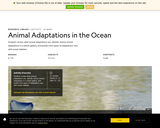
Students review what animal adaptations are, identify marine animal adaptations in a photo gallery, and predict how types of adaptations vary with ocean habitats.
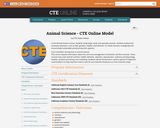
In the Animal Science course, students study large, small, and specialty animals. Students explore the necessary elements--such as diet, genetics, habitat, and behavior--to create humane, ecologically and economically sustainable animal production systems.
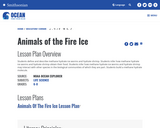
Students learn about methane hydrate ice worms and hydrate shrimp, including how they obtain their food and interact with other species in deep sea ecosystems. Students will work in collaborative groups to research these organisms to develop hypotheses about the relationship between methane hydrates, ice worms, and hydrate shrimp and present their hypotheses to the class. In an extension activity, students will construct models of methane hydrate molecules.
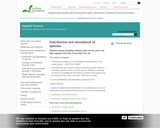
Students practice sampling methods which can be used in the field to investigate the distribution and abundance of species populations.

In this lesson, students become scientists who are studying the components of a Bald Eagle's diet. They will collect data by pulling prey chips from an envelope and recording data. They then graph and draw conclusions about what an eagle eats based in their research data and share their conclusions with the class.
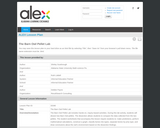
Students will dissect two Barn Owl pellets and compare the data collected from the two pellets. The student worksheets that accompany this lesson require students to: make predictions, perform mathematical calculations, construct a graph, classify bones into types, separate bones by prey type, and draw conclusions about the owl's environment based on the dissection findings.

Students take on the role of migrating birds. By participating in a physically active simulation, they experience the journey from summer breeding grounds to winter feeding grounds. As the activity progresses different scenarios affect these areas and the ability to successfully migrate.
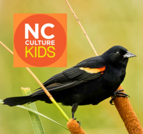
In this short video, join Emily and Emma from the Prairie Ridge Ecostation in Raleigh to take a look at some birds and learn about how we can observe all kinds of wildlife in our everyday lives.

Students will construct aquatic habitats in plastic bottles. They will observe the habitats for a period of four weeks and record what they see - changes in population, plant and animal growth, and water quality.
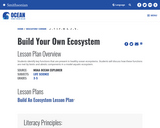
Students will create a model aquatic ecosystem and make regular observations over a period of time. They will also work collaboratively to conduct research on common ocean health issues and summarize their findings in a written report.
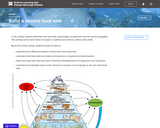
Students build their own food web using images of organisms from the marine ecosystem. This activity can be done indoors on paper or outdoors on a tarmac surface using chalk.

In this lesson, students run a simplified computer model and create board games to explore how climate conditions can affect caribou - the most abundant grazing animal in the Arctic.
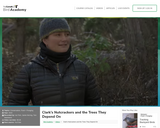
This video describes the mutualistic relationship between the Clark's nutcracker and the whitebark pine tree and how this relationship may be being impacted by climate change.
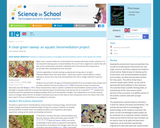
Students are introduced to the topic of bioremediation and collect information about Azolla, such as the morphology of water plants as opposed to land plants, the importance of symbiosis, the nitrogen cycle, the use of Azolla in agriculture, and Azolla’s ability to absorb heavy metals. Students formulate the research questions and hypotheses that they would like to investigate. Possible topics include measuring the gain in biomass depending on growth conditions (e.g. CO2 level, iron level in the water, amount of light), or the effect of Azolla on water quality.

This video provides information about the causes and effects of Earth's changing climate, specifically focusing on wildlife populations and the impact global warming has on habitats.
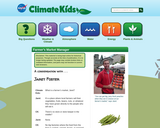
In this career-oriented interview, readers are introduced to the manager of several farmer's markets in Portland, Oregon. Following a brief description of his job and the general operations of a farmer’s market, he explains why these venues are beneficial to the vendors, the customers and the environment. The Climate Kids website is a NASA education resource featuring articles, videos, images and games focused on the science of climate change.